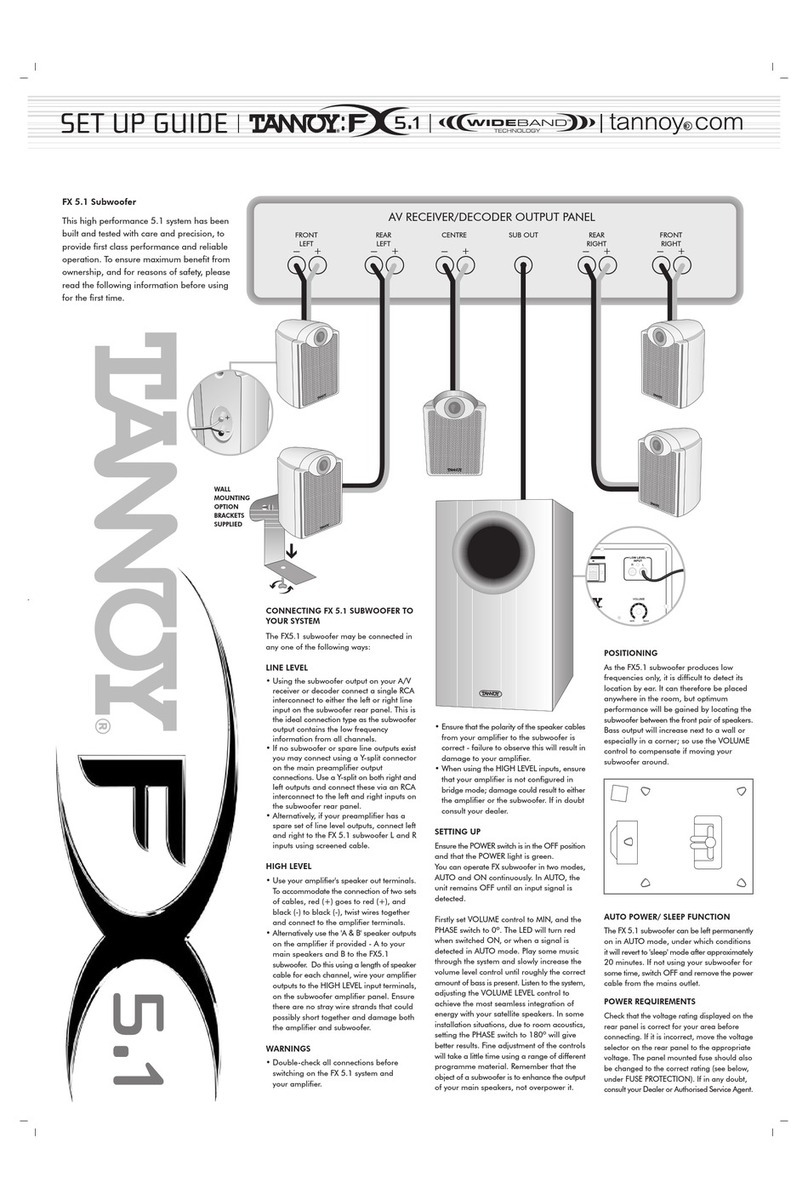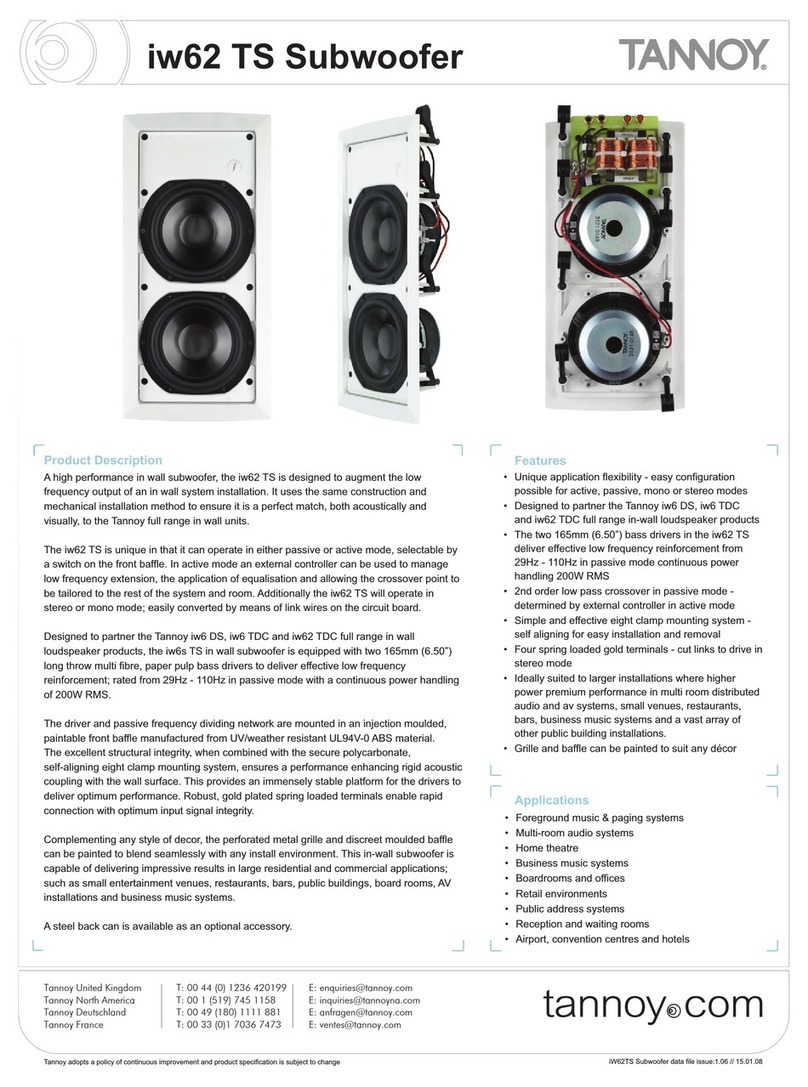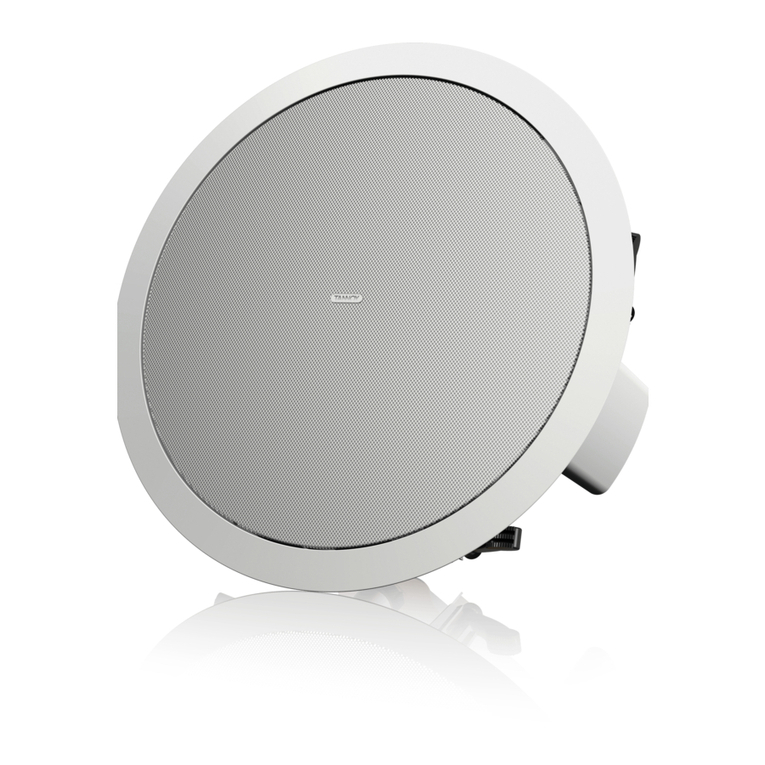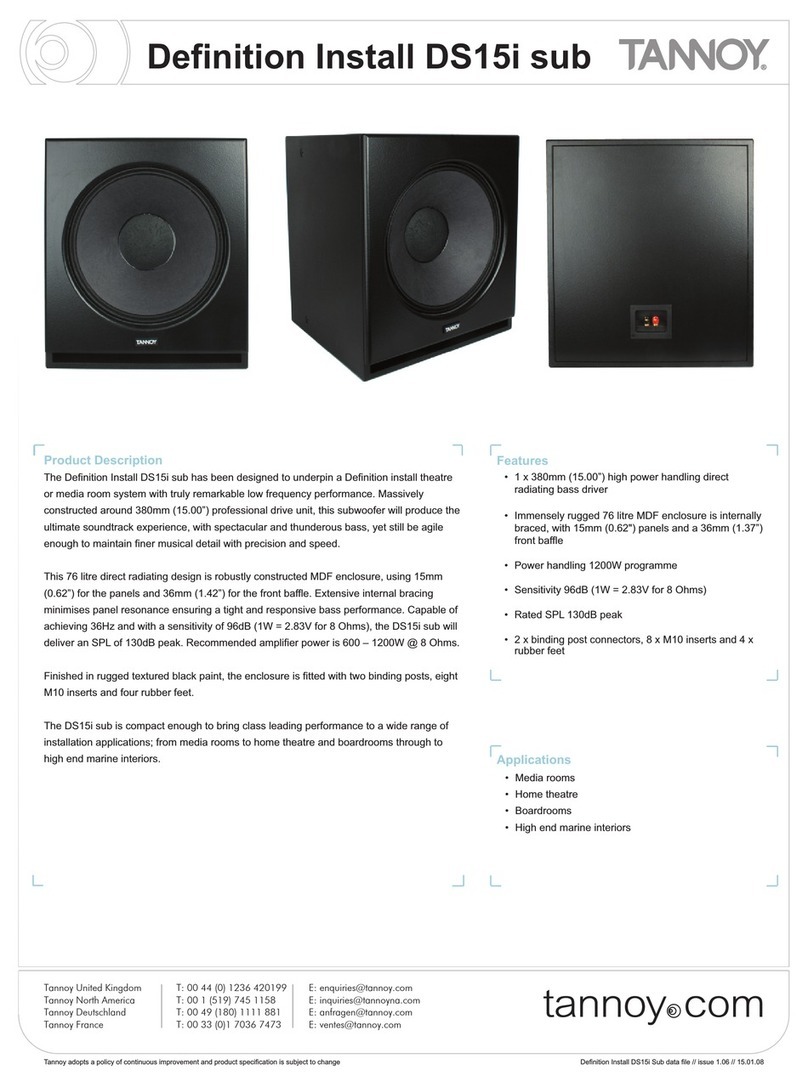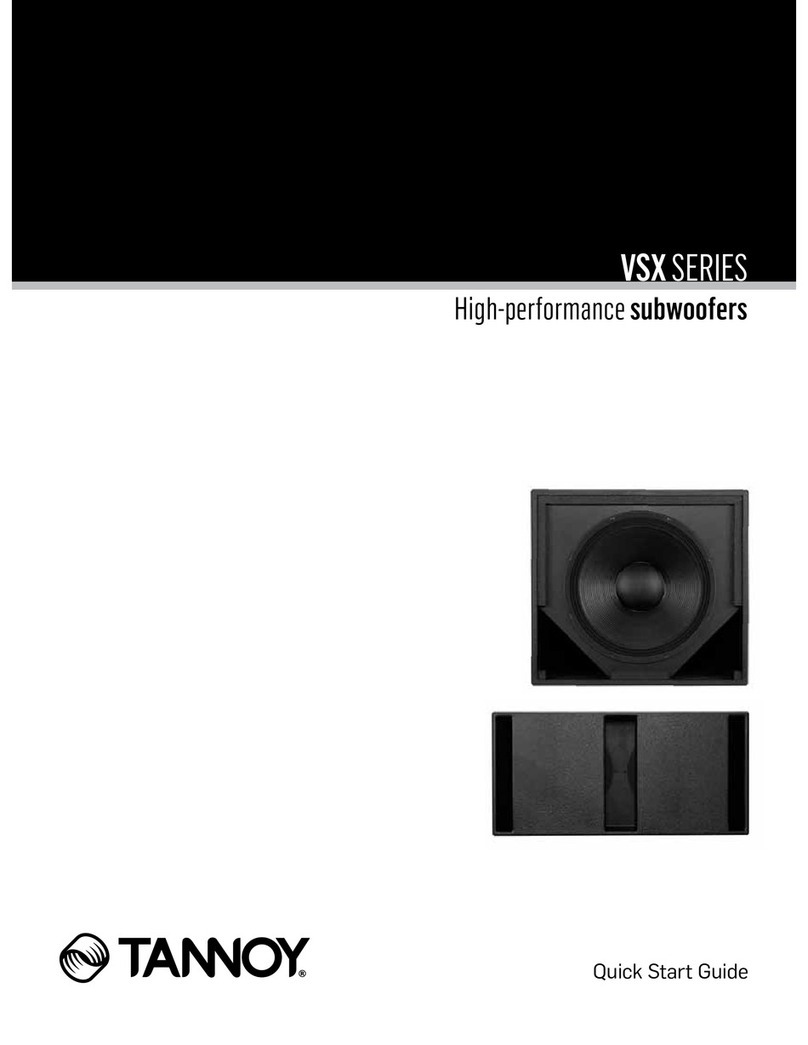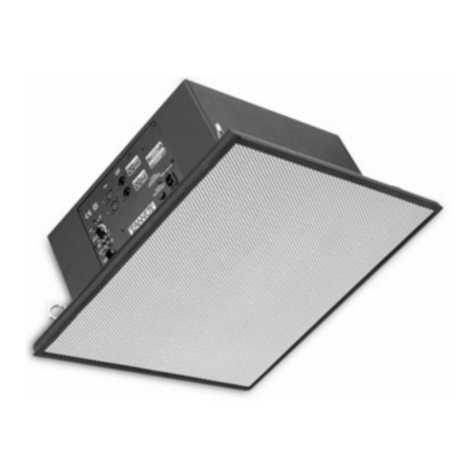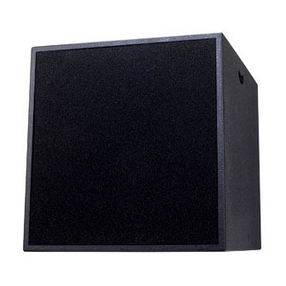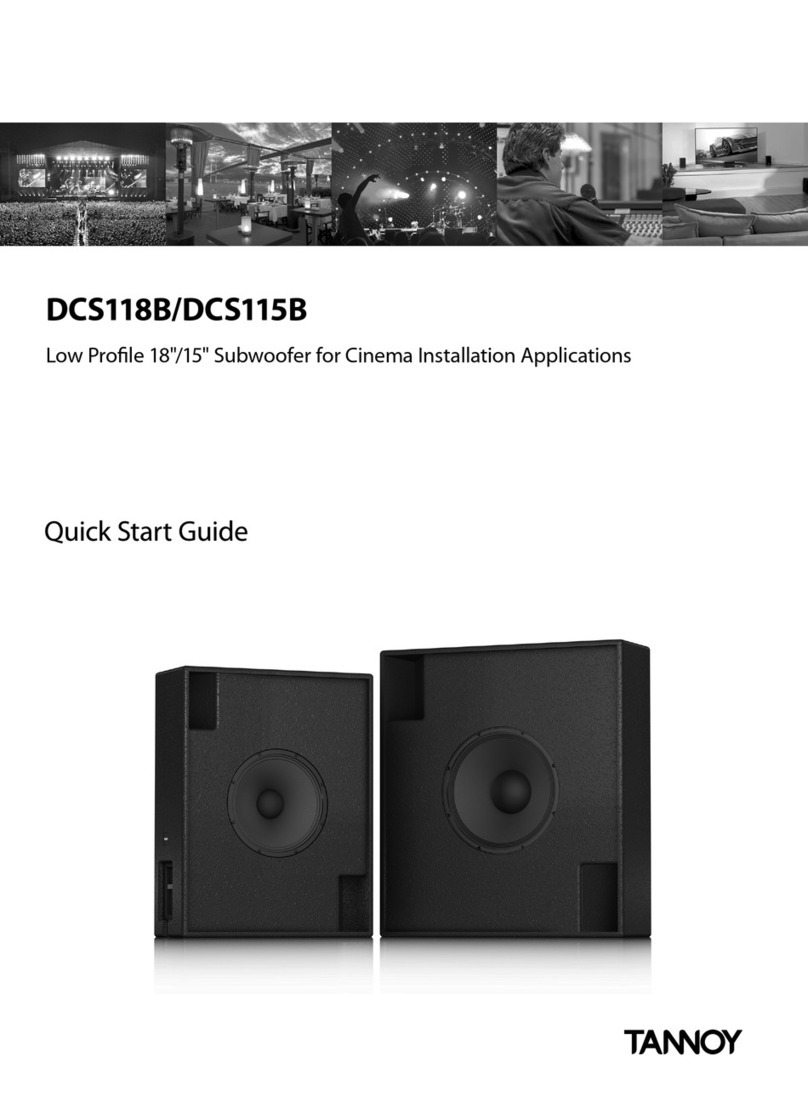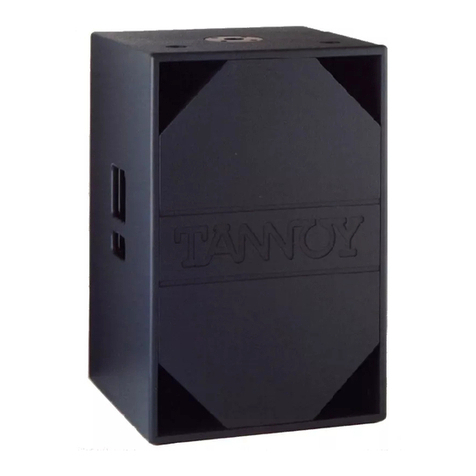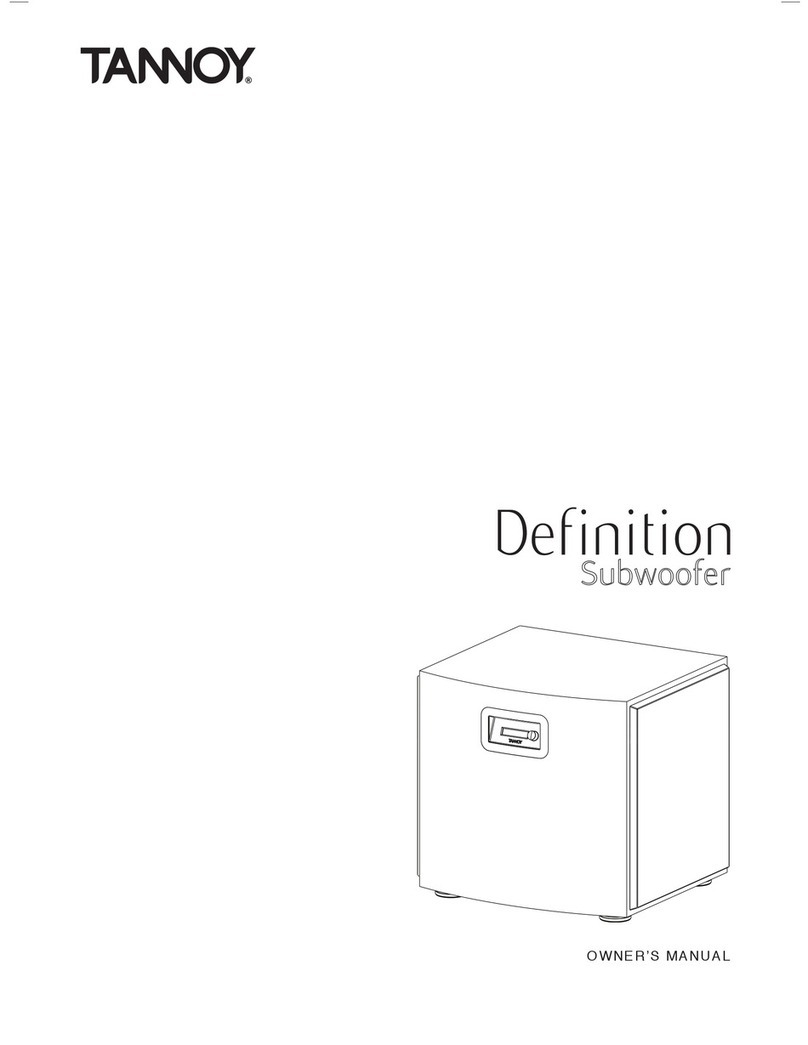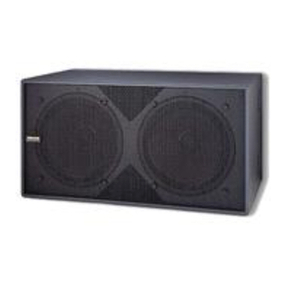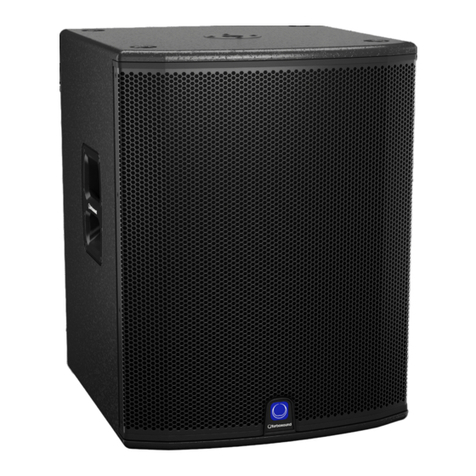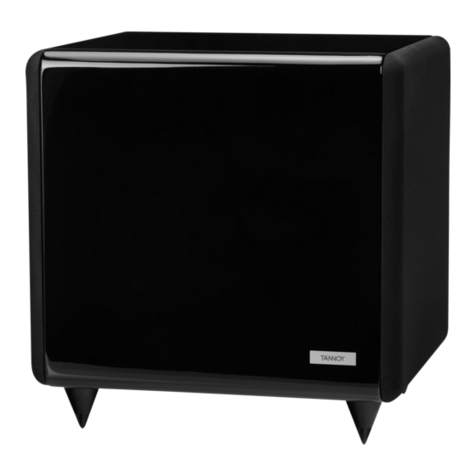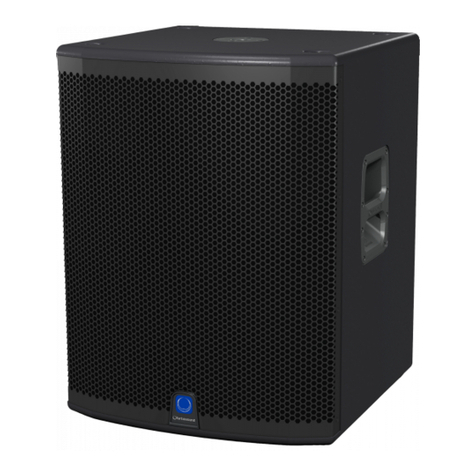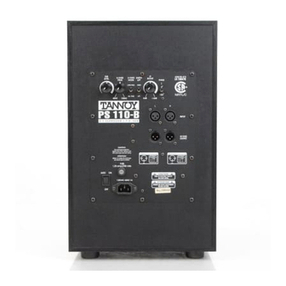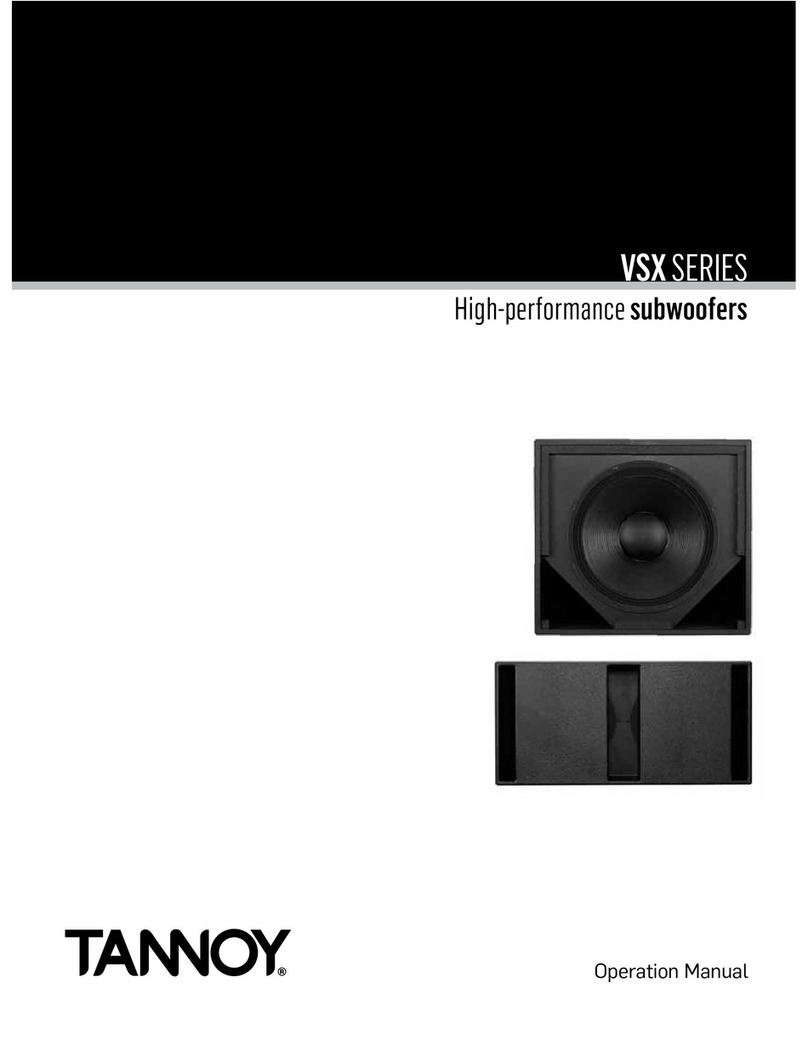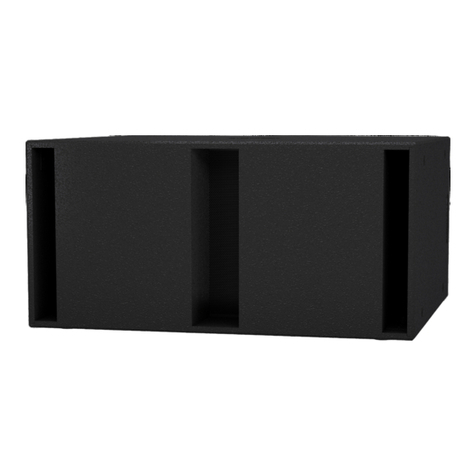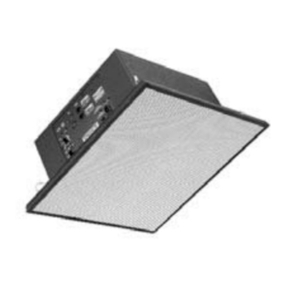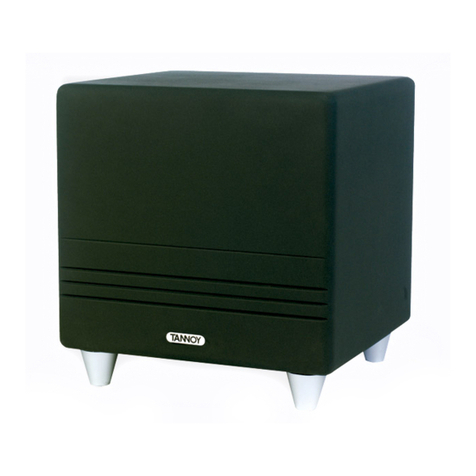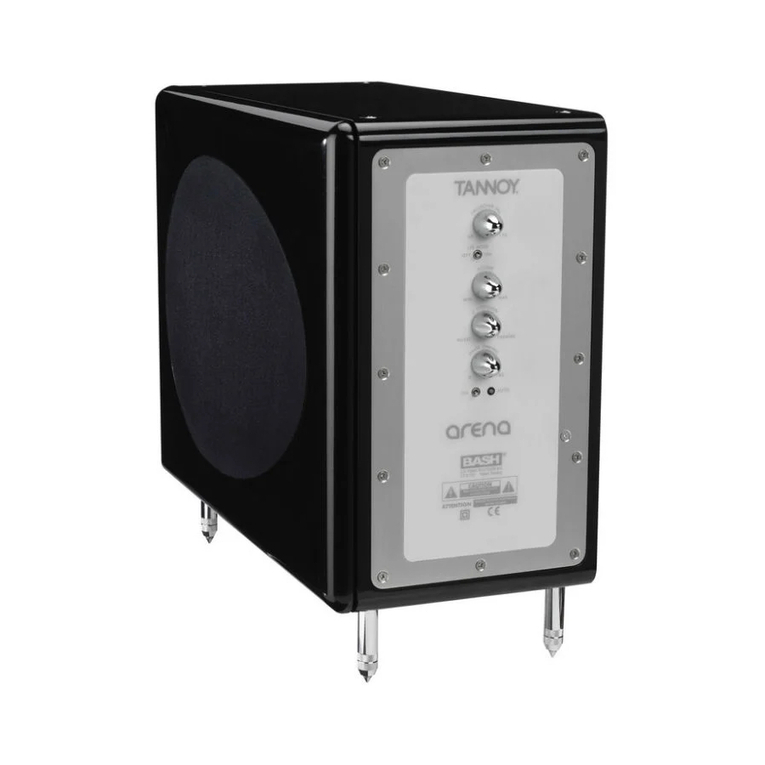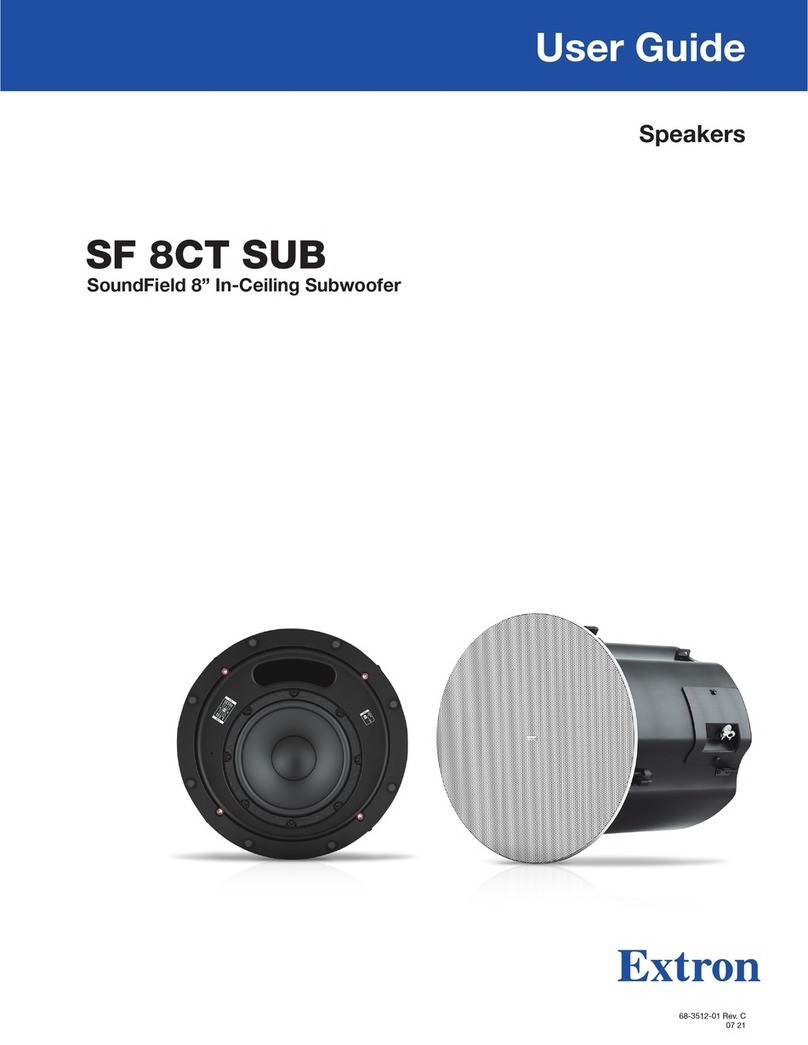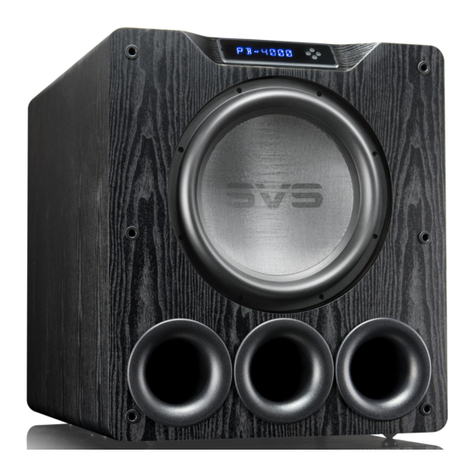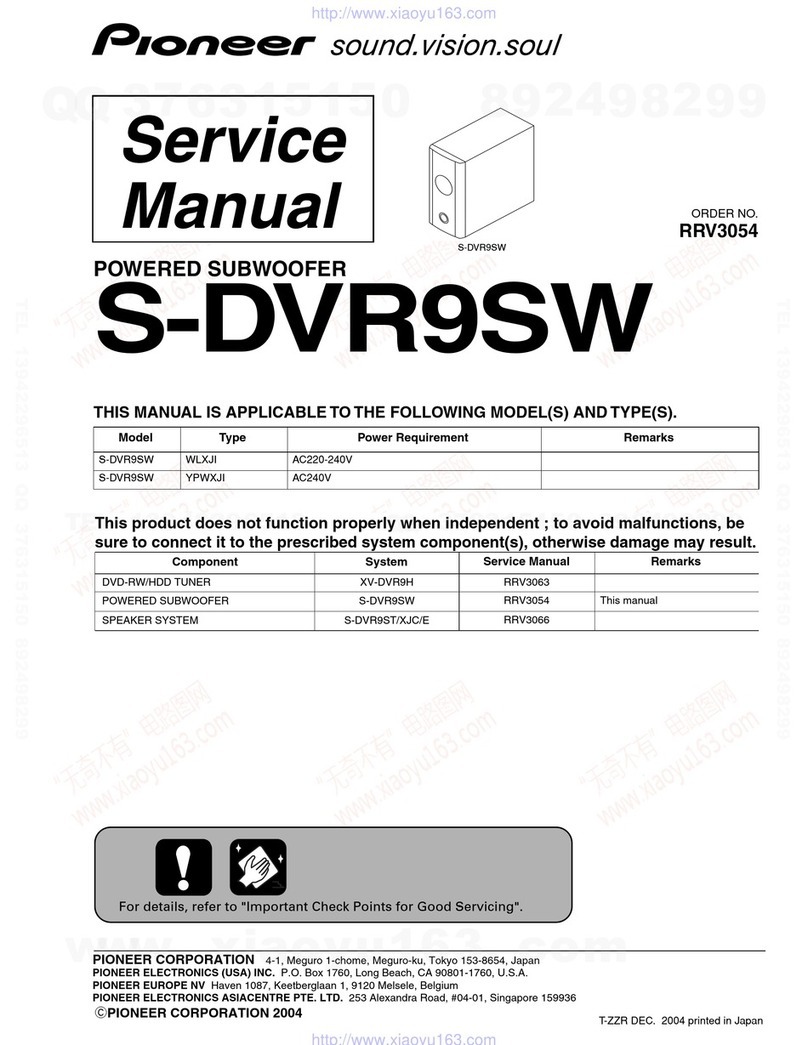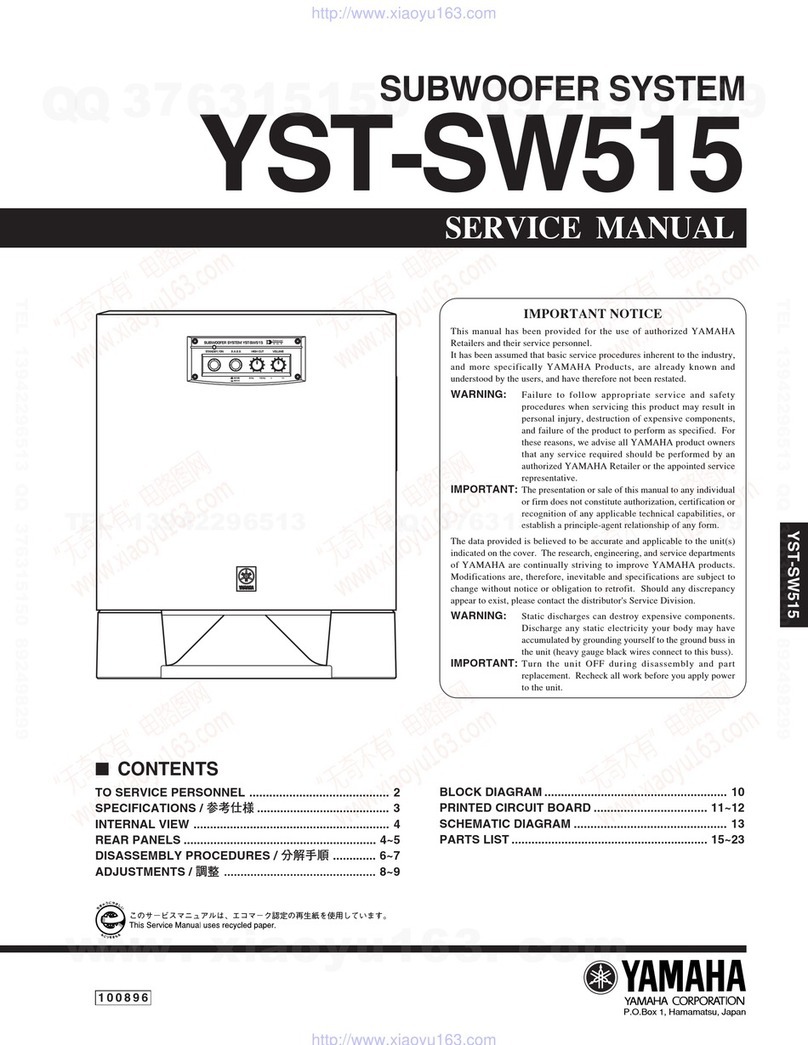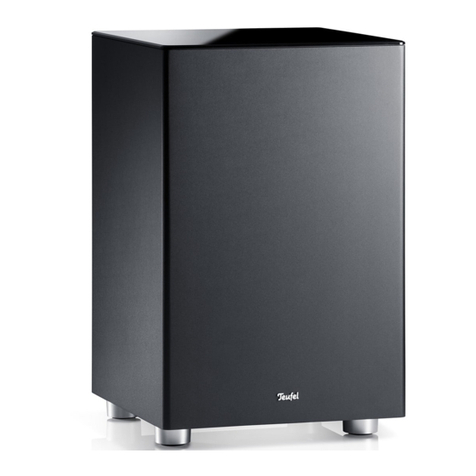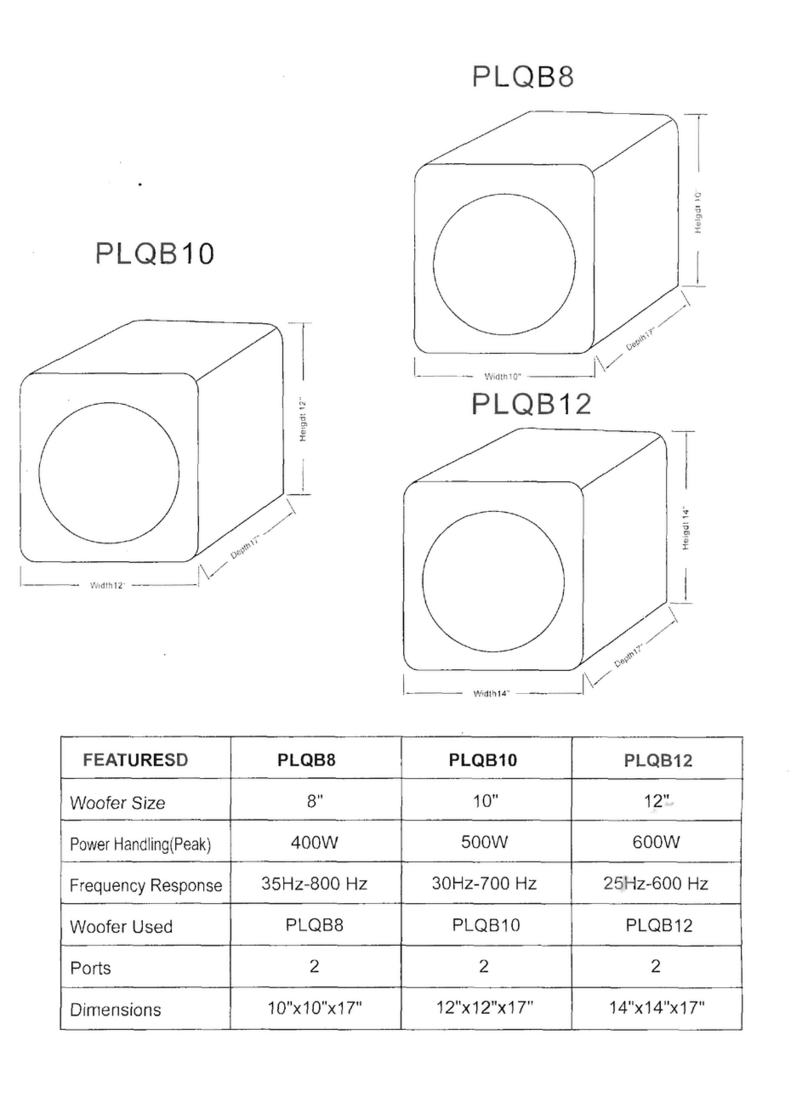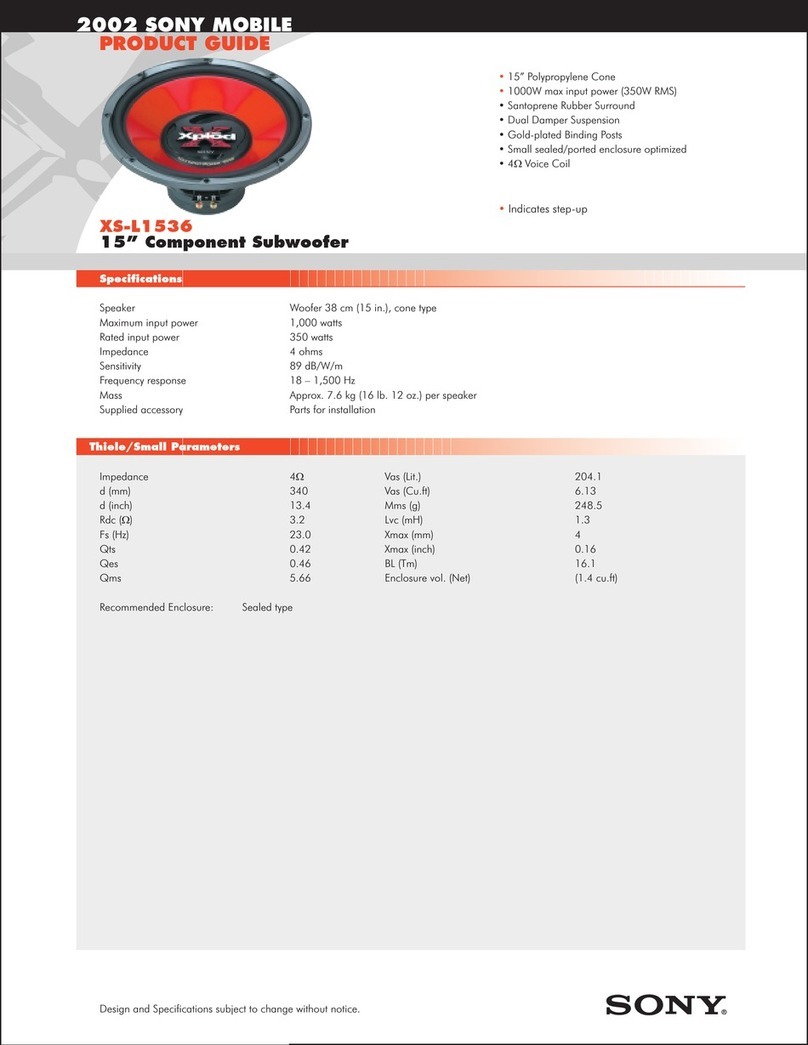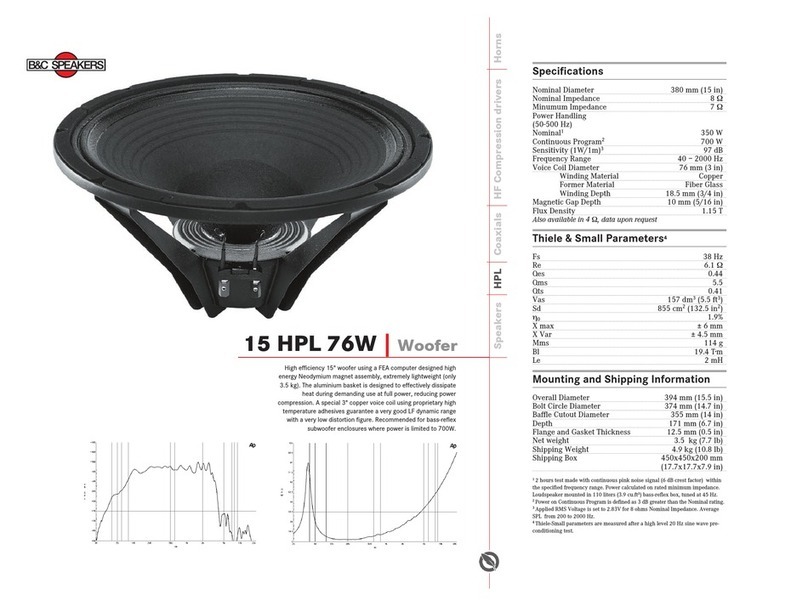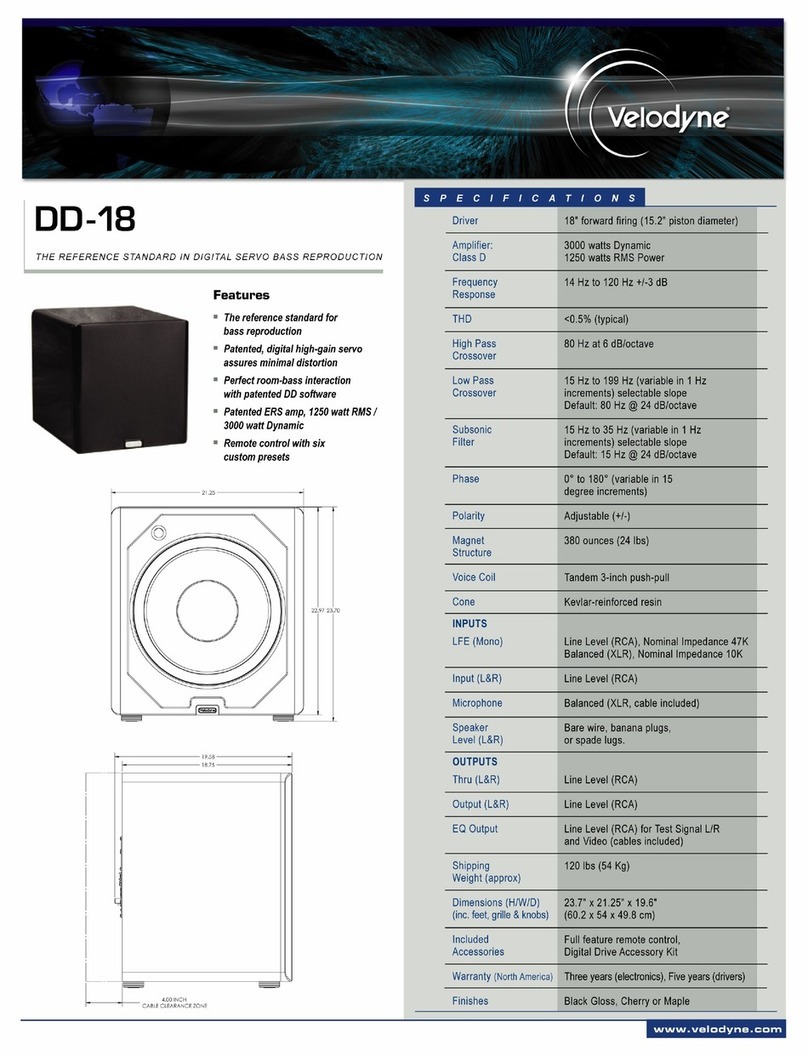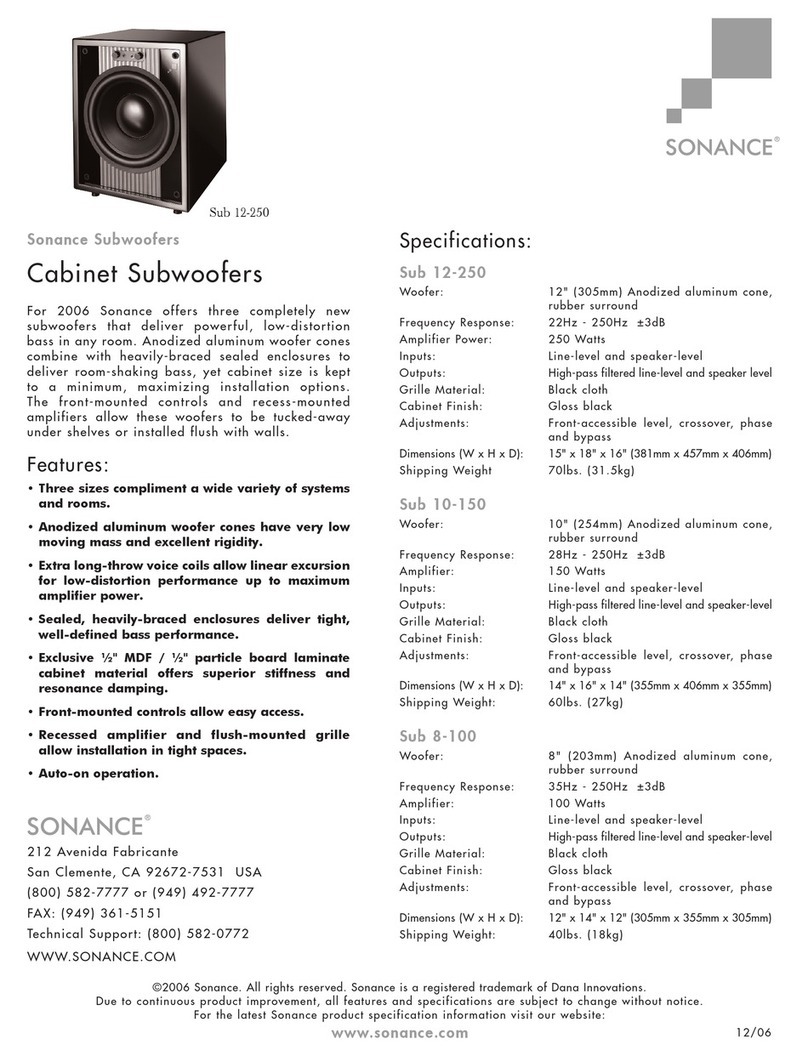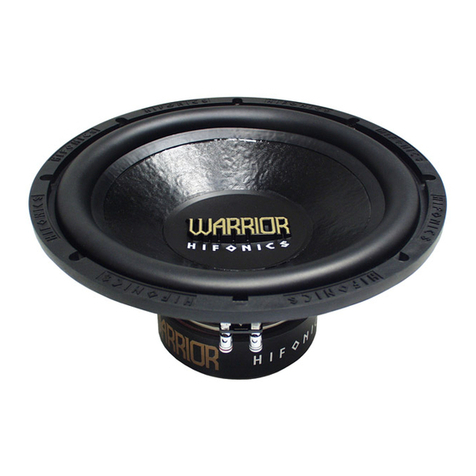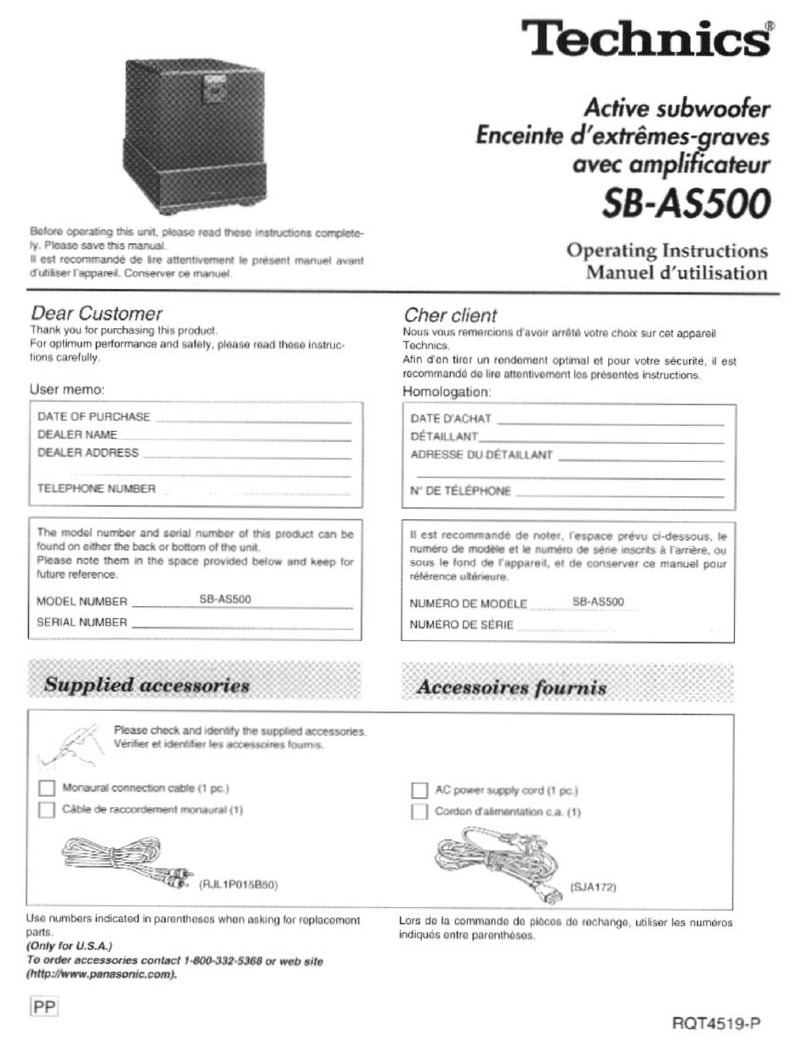
K): LFE Boost
This control offers the user the ability to boost the extreme
low frequency energy below 63 Hz up to a maximum level
of 6 dB in a linear shelf mode. The maximum boost is
obtained by turning the adjustment knob fully clockwise.
The boost is eliminated once the knob is returned to the
full counter-clockwise position. This feature is to enhance
extreme low frequencies for maximum effects. As with all
equalization, we advise its use in moderation.
L): Master Level Gain Control
Adjusts the level of the subwoofer without affecting the
signal level that goes to your main speaker amplifier.
Because the subwoofer has an integral crossover filter,
this will also act as a bass shelving control for your com-
plete loudspeaker system. While it is tempting to turn up
the subwoofer, it is there to reproduce low frequencies
with less effort, and lower distortion than the main speak-
ers can achieve. The most important thing is to maintain
a balanced audio spectrum.
M): Phase switch
Depending on the distance that your subwoofer is placed
from your main speakers, it may be necessary to reverse
the phase of the subwoofer. This is achieved by simply
moving the switch to the "180 degree" position. In most
cases, the main speakers will work best with the subwoofer
in the "0 degree" position. In any case, a flip of the switch
will allow for quick reference. The switch is in the correct
position for your set-up when the low frequency output is
greatest at and below the crossover point selected.
J): LFE Crossover Mode Selection Switch
The "all pass" switch position can be used when experi-
menting with a discrete subwoofer channel arrangement.
Careful and thoughtful use of the controls are required to
achieve best results.
For most music and film production applications, it is
mandatory to run the L.F.E. sub information through an
outboard proprietary production DSP unit. Most program
material has already been coded to limit the LFE band-
width from 30 Hz to either 80 Hz or 120 Hz. For this
situation, it may be a requirement that the subwoofer
being used have a linear frequency response up to 300
Hz. This can be achieved by switching the LFE
crossover mode switch to the "all pass" position, which
over-rides the LFE fixed "low pass" internal crossover fil-
ter. When no outboard DSP processor is mandated or if
you are unsure, it is wise to use the internal "low pass"
filter for added subwoofer protection. To operate the inter-
nal "low pass" crossover frequency feature, move the
switch to the "LFE low pass" position.
that a corner position offers
the best chance of exciting
the most room modes
(diagonal, orthogonal and
axial), but this also
changes the loading on the
subwoofer which lifts the
bass frequencies up in
level. Placing the woofer in
a corner (two walls and a floor) gives you another 3 dB
more low frequency energy than the two boundary condi-
tion, for a total of 6 dB over the unit in the middle of the
floor. When setting things up the first time, you will need
to adjust the subwoofer level for various room positions
you try to keep the system balance the same. The point of
experimenting with subwoofer placement is to get the
bass response smooth and even, not just getting lots of
low frequency output.
If you’re using Tannoy main speakers, you may want to
consider experimenting using the closed-cell foam reflex
port plugs that were originally supplied in the speaker
packaging. This will help tighten up the mid bass (80 Hz+)
performance since we don’t need the ports to enhance
the bass below 80 Hz. This plug is a pressure fit, so it can
be removed at a later date if required. Here are some
additional tips that will help you get the best during set-up:
Experiment with the subwoofer features.
Make sure you’re not being impressed by more bass
instead of smooth bass.
Don’t rely on a one third Octave RTA (Real Time
Analyser) to look for accurate guidance on level adjust-
ment, or for room mode response at any specific position.
It doesn’t have the time or the frequency capability. The
best way to listen is with a slow progression of low fre-
quency notes. Are there drastic variations in the level of
notes? If they come out of the signal source at the same
level, you can be pretty sure that the problems are room
related. If one listening position seems to provide signifi-
cant variations, try another position several feet away.
Because the wavelengths are quite long, it usually takes a
change of position equal to a good fraction of the wave-
length to hear the difference.
You also want to strive for a large uniform listening
area. It doesn’t help to have a point in your listening
space be perfect, but have that point be so small that you
can’t get both ears in it at the same time. Every listening
situation will be different and we can’t offer any more spe-
cific guidance on positioning than experiment and listen to
material you trust.
A subwoofer is an excellent tool for finding new sources
of rattles and buzzes in the listening area. Because there
is a concentrated low frequency source involved, nearby
objects such as wall panels, equipment cover plates, and
other objects may rattle. For maximum performance, you
will want to track down each rattle or buzz and correct it at
the source of the problem.
Section 5
Placement of the Subwoofer
The governing factor in bass response heard in any room
will be room modes. In addition, it is important to remember
Example
3 Room Boundary
(2 Walls and 1 Floor = +6dB)
